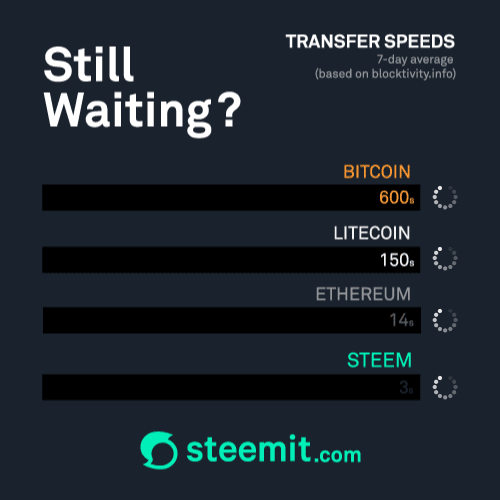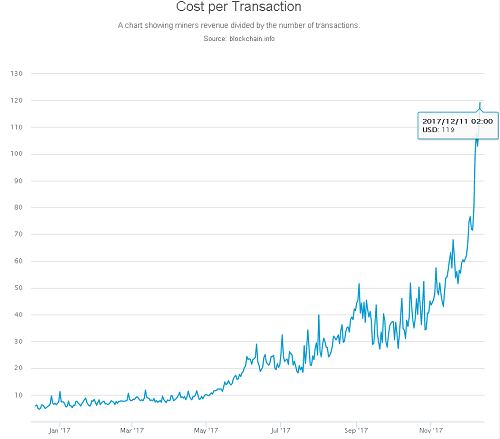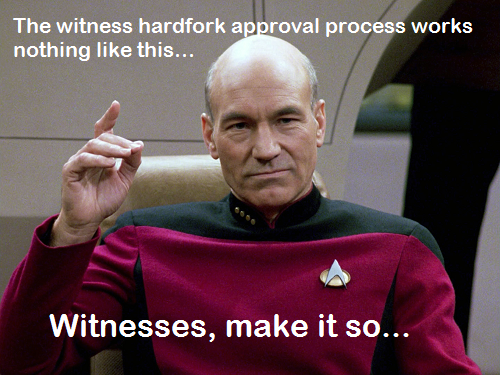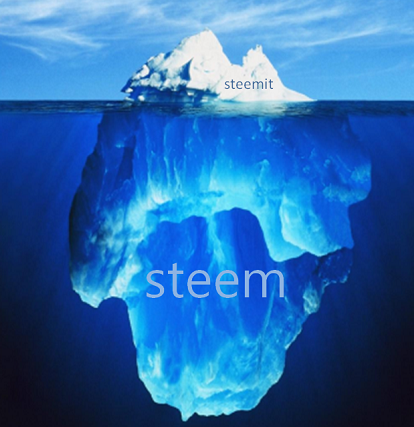The steem blue paper (Steem Inc, 2017) remains the latest document to provide a succinct overview of how 'The Company' actually perceives steem (the blockchain) and STEEM (the currency); and given that the members of Steem Inc are some of the most influential individuals on the blockchain (in that they are the ones who write most of the hard fork code, and who have the power to delegate millions of SP), it makes sense for everyone vested in steem and every user of the steem blockchain to devote some time to reading it.
.png)
To my great shame, after 10 months of being on steemit, this is something I have only just done, and something I wish I had done sooner, because reading this short (I can’t in good faith say ‘simple’) document has given me a fresh appreciation of the complex genius of underlying ‘structure’ of the steem blockchain, and of the huge potential for scaling and mass adoption compared to other blockchains.
A close reading of the document has also given me an insight into how Steem Inc perceives the blockchain moving forwards, and also goes quite a long way to explaining (IMO) why they appear so blasse (i.e. not that bothered) about many of the ‘steem issues’ (such as self- voting and bots) which irritate so many of the day to day users of the steemit platform.
(NB if you’ve been around for a while, you’re probably aware of much of the content below, so this is really just me working through my understanding of how steemit/ STEEM, steemit works, and also a first draft of the more in-depth analytical version to follow, part of my steem lit review, if you like.)
I’ll post up a detailed, line by line analysis of the entire document in a few days, but for now this is just my summary of the ‘basics of steem and STEEM as covered in the steem blue paper. That should be of particular interest to anyone currently having difficultyy sleeping.
Comments welcome, especially where I may have misunderstood anything!
NB the title of the steem blue paper!

The title's NOT the ‘steemit’ blue paper, it’s the steem/ STEEM blue paper, so the first thing we get is a reminder of the importance of getting our terminology correct:
- steem = the blockchain
- STEEM = the native currency
- by contrast ‘steemit’ is simply one of many ‘front’ ends’ built on the steem blockchain which utilises the STEEM currency.
As far as I can tell Steem Inc are primarily interested in steem and STEEM. Steemit, the ‘front end platform’ is the tip of the iceberg of steem/STEEM - a test case, an experiment before the hoped for ‘mass adoption’ of steem/ STEEM occurs, which may or may not be through ‘steemit’ - other front ends may well take over.
This post by @moderndayhippie does quite a nice job of explaining the difference between steemit and steem in an accessible way.
NB I am aware that the purpose of a blue paper is to cover technicalities, and that this probably why steemit isn't mentioned that much, and that that aspect of steem, STEEM, steemit is covered in the white paper.
Fundamentals of the steem blockchain
In this section I cover the ‘fundamental structural features’ of steem.
ONE - steem is a protocol blockchain
The very first, descriptor sentence of steem/ STEEM is as follows:
A protocol for enabling smart, social currency for publishers and content businesses across the internet
Possibly the single most important word in that sentence is ‘protocol’, a word which probably most people will overlook when it comes to blockchains - but it is so, so important... this word reminds us that steem is a blockchain that has been built from scratch… it is completely independent and can run on its own without the need for interaction with other blockchains.
Only 1% of blockchain ICOs can be categorised as protocol (unique) blockchain companies, the other 99% are ‘app blockchain companies’ (2) which are built on the back of an already existing blockchain. One of the foundational principles of Steem Inc’s business model is that steem/ STEEM is a very functional blockchain/ currency (see section 3 below for details) for future blockchain applications to be built on: the idea is that new blockchain applications will develop based on the steem blockchain, which will developing their own ‘smart media tokens’, which are based on STEEM (like what ER20 tokens are to ethereum), and anyone wishing to purchase those new ‘smart media tokens’ will have to firstly buy STEEM to do so: thus driving the price up.
**If you want a good example of the future disruptive potential (and thus potentially very profitable if yer vested in STEEM) of SMTs - check out this post - Announcing HUNT airdrop tokens for steemians.
TWO: Steem provides a publicly accessible database for immutable (text based) content
Steem is effectively a huge ‘knowledge storing’ system: it effectively stores text based content and locks that into the blockchain so it cannot be changed (immutability) in the long term (after the 7 day ‘payment window’).
This immutability is something which might freak a lot of people out, and it’s worth reminding people that what you publish to the chain stays on the chain after seven days. It’s worth pointing out that the ‘immutability’ depends on the various servers being run by the witnesses being maintained… if they all disappeared simultaneously then the whole system collapses… what the chances of that are I don’t know.
NB - the blue paper only says that the immutability refers to text based content, it says nothing about video/ music, so right here is a ‘Steem Inc’ disclaimer about the disappearing Dtube video issue. (I guess those videos are stored off the blockchain?!)
The potential for disruption here is HUGE - an independent content-storing publically accessible (for free) blockchain based database, has the potential to undermine any other for-profit or state-based online knowledge storage systems - most interestingly for me this includes not only social media platforms such as Facebook and YouTube, but also a whole range of for-profit educational platforms, and education… well that’s an estimated $9 trillion global market.
THREE: Steem is a publishing platform which allows any internet application to pull and share data
I guess this is where ‘steemit’ comes into the steem/ STEEM equation - steemit is the ‘first’ (main? If so for how much longer?) front end platform which most encourages users to actually publish the content to the database. As a front-end steemit also allows for the easy sharing of data via resteems, tags, and the (albeit a bit naff) search function.
In principle, the content which is continually being published should serve to increase STEEMs value, because (at least some of) that content has an inherent ‘use’ value, rather than just an ‘exchange value’, which should serve to drive up the value of STEEM which is an integral part of the steem ecosystem (steem and STEEM being dependent on each other.)
NB this also brings us onto the fundamental problem of the current rewards algorithm - because it allows individuals to reward themselves and their close friends for their shit content, which has no true ‘objective value’, this undermines the use-value of database, which gets filled up with crap rather than useful content, which both slows the system down and repulses people from it, killing adoption and retention rates.
As to the matter of ‘pulling data’, this depends on front-end database applications to do so. NB there are many of these already in existence - see this post here for a list (which may need updating!). Although how on earth someone is supposed to develop a database which pulls ‘valuable’ content when there is a misalignment between the now immutable content and past rewards I don’t know.
FOUR: Steem aims to reward those who produce the most valuable content
This is important - given that the whole business model of steem is based on encouraging people to publish and share content on the blockchain, making sure that ‘good content’ is the most accessible is crucial to the success of steem/ STEEM - this is possibly the single most important variable which will encourage SMT evolution and mass adoption.
If the content on the blockchain is disproportionately shite, people are just going to avoid it and stick to Wikipedia and Facebook.
I’ll return to the issue of ‘rewards’ in ‘STEEM fundamentals’ below…..

Steem Fundamentals TWO: Speed and Scale
I believe that the features of steem emphasised in this section are basically what STEEM Inc would wish more steemians would appreciate, rather than just take for granted. In their mind, I think, these are the features that are going to make steem a success (rather than the issue of reward distribution covered in the next section)
ONE: Steem offers the fastest blockchain transactions

I think we do take this for granted… you can send anyone steem or SBD nearly instantaneously, and it actually takes longer for me to authorise my bittrex withdrawals of STEEM to steemit via my email than it does for the STEEM to arrive in my account here! I’ve bought about another $1K’s worth more STEEM over the last couple of months and the slowest part of it is waiting for the Litecoin to clear into my bittrex account! I won’t even touch BTC these days because the just the thought of the transaction fees and speeds actually makes me anxious.
TWO: Fee-less transactions
Actually not quite, at least if yer ‘Vested’... technically we all pay through a 10% ‘tax’ on the rewards pool which goes to the witnesses who maintain the servers, on which STEEM depends, but even with that, it's still much, much, much, much cheaper than Bitcoin (source from @acidyo cited below):

THREE: Scalability
The hope is that steem/ STEEM are scalable to hundreds of millions (or even billions) of users. Although from the blue-paper, I don’t see how this quite adds up - apparently steem can support >10K transactions/ second, but this doesn’t sound like that many uploads/ upvotes/ comments if we’ve got 500 million people on the chain at any one time? And I’ve noticed that steemd is getting a bit laggy already at over so maybe this is overstated?
FOUR: Witnesses determine hard forks by consensus

This is one of the things I like most about steem - the radical decentralisation concerning future hard forks: if the community decides we want to bring back N^2 rewards, all that has to happen is for 17/21 witnesses to update their servers with the code that ‘makes this so’ and it’s done…. And anyone can ‘code a hard fork change proposal’.
Of course this also shows you the limitations of steem’s decentralisation… in terms of changing the algorithmic architecture, it’s decentralised as far as those top 20 (+1) witnesses.
All users have 30 (stake weighted) witness votes and you can vote for them here: https://steemit.com/~witnesses
FIVE: Chainbase and AppBase
Chainbase is the database portion of the blockchain and AppBase allows for modularisation through creation of additional non-consensus blockchain plugins.
Not much to say on this: basically ChainBase is very efficient, and AppBase means that different elements of the blockchain can be stored on different cores, rather than every core having to store every element.

STEEM FUNDAMENTALS: STEEM = a ‘smart and social token’
What’s most interesting in this section is what’s not discussed... reward curves and SBDs… so not only is STEEM further down the blue paper than steem, this tells us that these two ‘most visible’ features of how we’re all rewarded on steemit really are just not that significant in the eyes of Steem Inc…. I guess this is because there is capacity to change both of these things ‘higher up the structure of the system’ (i.e. via the witnesses).
Anyway, for the sake of thoroughness I’m going to QUICKLY summarise what is in the blue paper on the matter of STEEM:
STEEM is initially characterised as:
a tool for building perpetually growing communities which encourage members to add value.
Note the open nature of the language… so much room for interpretation, and nothing about ‘fairness’ or ‘distribution’.
ONE: Token Generation
STEEM tokens are generated at a fixed rate of one block every three seconds (produced by the witnesses) and actors compete in different ways for access to these tokens, which are distributed accordingly:
- Content creators and curators get 75% (‘the rewards pool’).
- 15% is distributed as interested to those with Vested STEEM, proportionate to the amount of STEEM vested.
- 10% goes to the witnesses for producing blocks (and hence ‘maintaining the database’)
Fewer tokens are produced every year, so there there is a gradually decreasing rate of inflation:
The rate that new tokens are generated was set to 9.5% per year starting in December 2016, and decreases at a rate of 0.01% every 250,000 blocks, or about 0.5% per year. The inflation will continue decreasing at this rate until it reaches 0.95%, after a period of approximately 20.5 years.
Interestingly, the blue paper says nothing at this point about SBDs, these are clearly a (useful) ‘tag on’ to the more central STEEM token.
TWO: Steem is distributed via ‘proof of brain’ rather than ‘proof of work'
The general idea here is that users are incentivised to compete in ways that add value to the network, and (at the level of posting and curating) this is achieved by two token features: the rewards pool, and voting.
The blue paper refers to the rewards pool (comprised of 75% of generated tokens) as one of the most misunderstood aspect of steemit, and while it mentions that some of it will go to curators and some to content producers, it doesn’t mention anything about how rewards are split between them - so for those of us who have mused over whether or not the curators should get more of the 25% of this 75% than they do, this aspect of the debate doesn’t even register at a technical level.
Voting - leverages ‘the wisdom of the crowd’ to determines how the rewards pool gets distributed to content creators. Voting for content is the means whereby an ‘objective’ STEEM value is placed on the content people produce (which may be different to their subjective valuation). This process should distribute STEEM tokens from the rewards pool according to the will of the community. (NB the 'objective' and 'subjectives' are my additions, the bluepaper doesn't mention these words).
However, not everyone has an equal power vote: One invested STEEM = one vote, not one person = one vote. The more STEEM you have vested in the platform, the more power you have to decide how much of that reward pool goes to what content producer.
The blue paper doesn’t mention anything about voting power depleting over time, or about the rate at which this should be set. Maybe this is just a mistake, but it’s not in there anywhere!
The blue paper doesn’t mention self-voting, or buying votes either, and it’s just interesting to note their invisibility on the paper!

Steemit’s Platform features
The blue paper finishes off with a fairly lengthy section of the ‘other’ features of the platform. I’m just going to bullet point them here as this post is a bit long already. Really these features serve to further remind us that there really is a lot to this blockchain, steemit is just the tip of the iceberg!!!

The groupings below are my own:
ONE: ‘Functionality/ Scalability Features’
- Developers can build from data on the blockchain - and there have been a lot of developments to date: just see steemtools for the many examples.
- Native name systems allow easy interaction between users.
- Smart Media Tokens - interestingly, the paper says hardly anything about this…. It just mentions that it’s a protocol layer under development… so I’ll come back to this in a future post.
TWO: ‘Economic' features
- SBDs bridge the gap between FIAT and crypto. These are supposed to be pegged to the US dollar (obviously we all know this hasn’t quite worked out!)
- Steemit is a decentralised exchange which allows direct peer to peer (near instantaneous) transfers, but also payment by escrow (third party) options.
THREE: Security features
- There is a hierarchical key structure: posting, active, master. I’m not sure that enough people appreciate this. Probably those who have been hacked at only one of these levels do!
- There are time-lock security functions… through the SP 13 week lock in and the savings account for SBD feature.
- The paper also mentions that there’s stolen account recovery - via submitting a previously active private key. (NB I had no idea this was the case, something new I learnt!)
FOUR: Multiple account functionality
steemit allows more than one person to control accounts through multi-sig authorities and it’s also possible to set rewards for posts and comments to go to multiple parties, which encourages collaboration.
FIVE: Bandwidth limits
right at the end of the paper…. Probably one of the most important features… bandwidth limits how much you can interact on the blockchain each day/ hour/ minute…. To prevent overloading of the system. The more SP you have, the more you can interact.
I know limited bandwidth is an issue among newer users with low SP, and this is set to get worth because of spam-abuse - putting further restrictions of low power accounts is (I think) pretty much the only way a decentralised system can limit this sort of thing happening.

Conclusions and Final Thoughts
I think it’s worth quoting the whole conclusion, it’s a nice upbeat sign off from Steem Inc.
The unique rewards and incentive program offered by the Steem blockchain and token are designed to make Steem the ultimate on-ramp into cryptocurrency for mainstream users. The performance of the blockchain is designed with widespread mass adoption of the currency and platform in mind. When combined with the lightning fast processing times and fee-less transactions, Steem is positioned to become one of the leading blockchain technologies used by people around the world.
So, while there may be ‘issues here on Steem, maybe we should cut Steem Inc some slack?
Even with all of the self-voting, bots, injustice, reward-pool plundering, the fundamentals of the platform are incredibly sound… sure these things need sorting out, and we all need to work get them sorted….. But they are quite ‘minor’ issues that are relatively easy for US to sort out…. Meanwhile we should be thankful, I think, that the fundamentals of steem are so ‘sound’.
Personally I’m encouraged by reading this blue-paper…. So encouraged I just Vested another $1000 or so over the last month. I might even 10* that, once my flat-sale goes through.
Sources
- Steem Bluepaper
- Steemit FAQs
- the difference between steem and steemit, also source B.@moderndayhippie -
- Difference between protocol blockchain companies and app blockchain companies
- Bitcoin fees chart thanks to @acidyo
- Transaction Image thanks @steemitblog
- Transfer speeds thanks @fitzgibbon
- Page dividers with permission from @odrau
- Source A
I could do an edit, but I think a comment makes more sense...
Thanks for all the upvotes/ comments, but this post hasn't been rewarded highly enough for me to bother publishing the more detailed analytical summary I mentioned above.
It just doesn't make financial sense. I may as well just play @steemmonsters or video myself playing computer games.
Really good overview. Steem(it) can be really complicated if one wants to throughly understand how it works. Plus, of course it's changing all the time too.
Nice crunchy overview well targeted to readers who don't want rehash of the basics but want to learn a little deeper.
Thanks, that was the general idea. I'm starting to think that even just the text is getting a little bloated! Come to think of it, pictures aren't on chain either, are they?!
Yep, pictures are also on IPFS. It's kind of amazing that the steem blockchain is as efficient as it is, given that other chains routinely talk about adding text in the size of dozens of characters to their blocks.
Wow, you did quite a research. I am convinced that we will see adoption but steem inc do need to pay attention on steemit. It may be a experiment for them, but it's not for the masses. People who are spending hours on it, want to see it perfect.
Well it certainly wouldn't hurt the scaling up of steem if they paid some attention to sorting out steemit's issues!
Excellent article.
Yeah, that part is in the Whitepaper, not in the Bluepaper. It's a bit more complex, but it has a lot more details about the platform.
I have skimmed the white paper, but it's a bit old now so I thought I'd start with this, also this was easier!